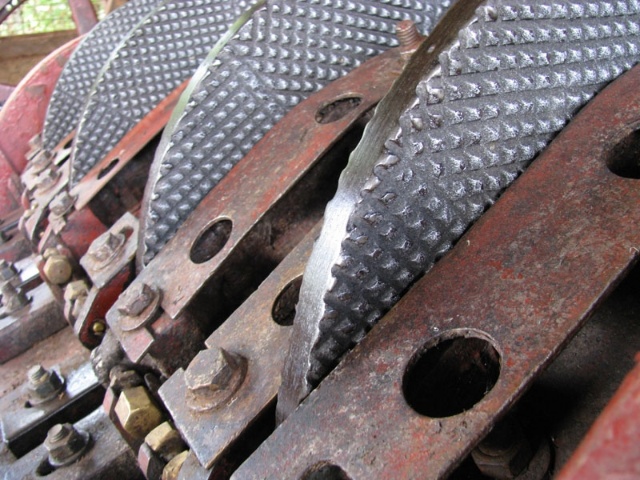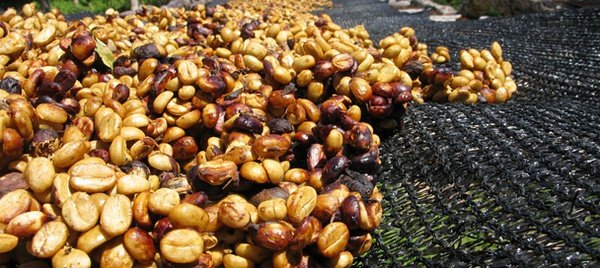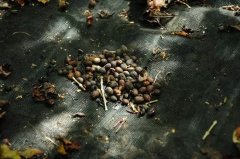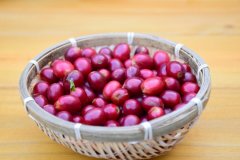Different treatments of coffee beans introduce the differences in the description of flavor and taste of water washing and sun honey treatment
sun-drying
The Dry process/Natural method is the oldest and most primitive method of processing coffee beans. More than a thousand years ago, Arabs treated coffee this way. It is to place the harvested coffee cherries on the terrace for direct sun exposure, receive direct sun exposure (about 27 days to 30 days), and dry the moisture from 60% to only about 12%. This treatment, which is simple in concept and inexpensive, has many variables and risks; it has been used for a long time to treat beans that are not of such good quality.
Flavor presentation: soft acidity and even bitterness, consistency is thick, rich layers, sweetness is more obvious, good quality sun-dried beans will have fruit flavor or wine fragrance.
Sun-drying: Put fresh coffee fruit into the sun for sun-drying, and after about 2 to 4 weeks of continuous stirring, naturally dry to about 12% moisture content. The coffee cherries are heated evenly, and after drying, the coffee core and the outer skin will be separated, and then the pulp and peel will be removed by a hulling machine. Wait, the screening is done.
Coffee beans from Yemen mocha, Ethiopia, Brazil and Indonesia are treated with this method.

washing method
Water washing method is a technology invented by the Dutch in the 18th century, suitable for rainy areas, although the process is quite cumbersome, but it is currently the more common green bean treatment method, accounting for about 70% of the total coffee. Harvested berries are peeled to remove most of the pulp from the beans. The beans are then directed to a clean tank where they are soaked in water for fermentation to remove the remaining pulp layer. Through water treatment, immature beans and defective beans will be selected due to buoyancy, and the fermentation process is better controlled, so the flavor is not as messy as sun-baked beans, but presents obvious acidity, slightly more complex and cleaner (without any negative flavor, such as astringency or sharpness) cup characteristics. But it is also because it is too "clean" and the richness of flavor is also slightly weaker.
Flavor presentation: acidity is stronger, taste is cleaner, refreshing and bright.
Sift out floating beans: Wash coffee fruits with water and remove immature fruits floating on the water surface.
Pulp removal: fresh fruit is fed to a pulp sifter for peel and pulp removal.
Pectin removal: remove the pulp of the seeds into the fermentation tank, after about 16~36 hours of natural fermentation, dissolution of pectin surface and then cleaning.
Drying and shelling: continue to expose to the sun for 1~3 weeks to reduce the moisture content to 12%, and then remove the shell with a shelling machine.
The color of washed beans is blue-green, beans are beautiful, Guatemala, Colombia, Blue Mountain, Kona, Kenya, Java and Panama coffee are washed beans.
semiwashing
Semi-washing, also known as wet stripping or wet planing. The difference with other treatments is that the coffee beans are not directly dried to the moisture content of 11~12%, but the surface crust is removed when the moisture content is about 30~35%, so that the surface of the raw beans is directly exposed, and then the drying is continued until the moisture content that is not easy to decay and convenient for storage is reached. Semi-washed coffee beans have a lower acidity and a thicker texture.
Semi-washing coffee flavor between the sun method and washing method, this method is popular in Indonesia, mantenin that is more semi-washing method, Brazil has also begun to use semi-washing method in recent years.
Semi-washing is somewhat similar to washing, removing the rind and part of the pulp from the coffee cherry berries, drying the berries, drying them, wetting them, grinding off the pulp and removing the seeds in a special machine.
honey treatment
Honey treatment means that the pectin layer of coffee beans is very sticky before exposure, and the sticky feeling is like honey. When the coffee pulp is separated from the coffee beans, the pectin layer coated by the outside is exposed to the sun, absorbing moisture from the air and making the pectin layer sticky. The term "honey" refers to the mucous membrane layer of coffee pulp. After harvest, the fruit will be peeled off the skin, leaving the flesh to be sunburned, so that the sweetness of the flesh can enter the beans, and it does not take as long as the sun method.
Flavor presentation: low acidity, high sweetness, with fruity taste, taste cleaner than sun-dried beans, and dry fermented wine tail.
Peel removal: coffee fruit will be washed with water, remove the peel, leaving pulp
Sun-drying: Keep the pulp containing sugar in the sun. At this stage, it must be partially stirred to avoid mildew.
Getting green beans: remove pulp, pectin and hull once after drying.
Honey-processing is the most popular method of processing, and Central American countries such as Costa Rica and El Salvador are among the best.

Important Notice :
前街咖啡 FrontStreet Coffee has moved to new addredd:
FrontStreet Coffee Address: 315,Donghua East Road,GuangZhou
Tel:020 38364473
- Prev

Ethiopia Yega Shefi Panama Rose Summer Brazil Air Drying Sun Treatment Method Flavor Introduction
It was cool to know that someone in the world tried to dry coffee cherries on trees and let the dried fruit fall.
- Next

Introduction to the description of taste and flavor of coffee washing, sunburn, wine and sunburn treatment
Coffee beans are the seeds of coffee fruit, which is also called coffee cherry. After removing the exocarp and pulp of the coffee fruit, you will get two coffee seeds, that is, coffee raw beans. Coffee fruit is easy to rot when ripe and picked, so it should be dealt with in time to facilitate storage and transportation. There are several methods to deal with coffee fruit, such as sun water, honey washing and so on.
Related
- What is the meaning of lactic acid fermentation with coffee bean treatment?
- How to judge the state of foam by sound?
- How does the latte pull out the unicorn pattern? Come to get for a little trick to improve the flower pull!
- Will flower pulling affect the taste of the latte?
- Do you know the history of coffee?
- The difference between honey treatment and sun washing what is raisin honey treatment?
- What kind of milk can a novice use to make coffee foam to keep the foam longer? The correct method and skills of milking tutorial sharing
- Why do washed coffee beans taste sour? Flavor characteristics of washed Coffee
- Introduction to the skill of how to practice the size and height of water injection around the circle of hand-brewed coffee
- How do beginners practice coffee flower drawing from scratch?

